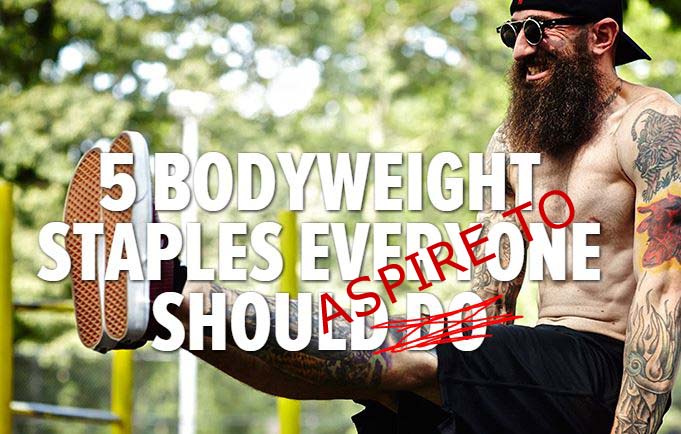Most of us know of solidly-built and ripped athletes that don’t train with weights and yet have a strong, lean and performance ready body. They prove it is possible to use your own bodyweight to develop strength, speed, power and explosiveness. Today we will show you the bodyweight exercises to build strength without equipment.
However, many people that incorporate bodyweight exercises into their routine aren’t getting the results they desire. They’re just going through the motions of a well-worn out routine and aren’t achieving their fitness goals no matter how many push-ups and crunches they perform.
The reason is twofold:
Once you’ve reached a certain training age as well as proficiency, your body adapts to the same old routine, leading to less overall progress and results over time.
You can give your body the shock it craves by adding weights to your routine. This also means your workouts are tied to a gym, or you’ll need to fork out on an expensive home set-up.
Before you join the cue for the squat rack, know that you can easily increase the resistance and intensity of bodyweight training by performing a few trickier exercises that concentrate the load on fewer muscles (isolation). In this post, we’re going to go through five exercises you don’t need equipment for that will upgrade your current routine, and help you SMASH through any plateaus.
Single Leg Squat
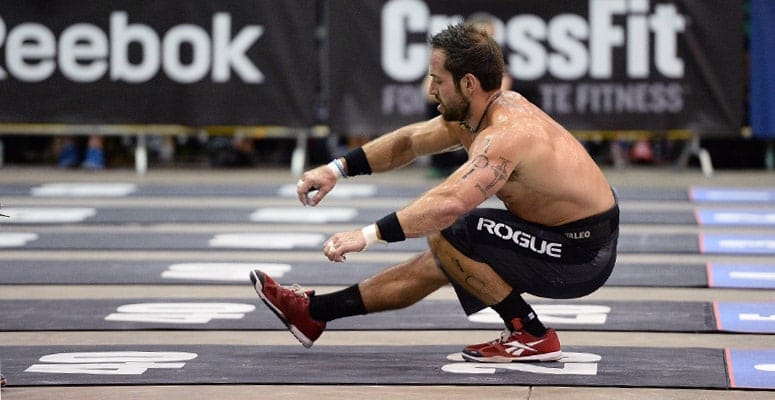
Single leg movements are a fantastic way to create a new and challenging stimulus to your training, balance out differences in strength between legs, and improve your balance and flexibility.
Before performing a single leg squat, make sure you have a decent level of mobility and can already properly squat with both legs proficiently. A safe way to build your range of motion is to place a target, such as a box or a bench, behind you that you can squat down on and touch (without sitting down).
The points to remember with the single leg squat are to keep your weight on your heels, keep your back straight, look forward, engage your posterior chain (glutes, hamstrings, etc), and lower down in a controlled manner.
Jumping Lunges
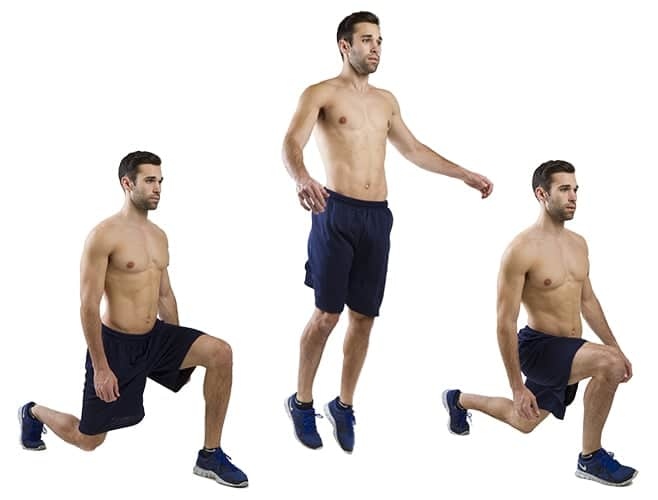
Keeping the theme of single leg movements, jumping lunges are an excellent way to work your legs individually as well as add power and explosiveness to your routine. The jumping lunge is exactly what it sounds like although many do it incorrectly.
First, make sure to descend with control. Next, push off vertically as aggressively as you can while maintaining perfect posture, ensuring your chest is open, and keeping the shoulder blades down and back.
In mid-air, switch legs, land softly, and repeat.
Warning: these will burn you out quickly!
One-Arm Push-Up
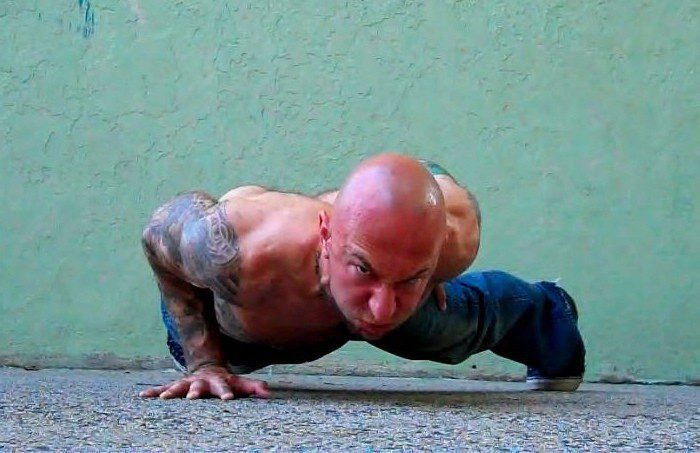
The push-up is one of the most underutilized and underrated movements in the gym. I don’t understand why. Push-ups are AWESOME! They require no equipment, and there are endless variations – adding weight, adding objects, elevation, or thrusting off the ground and adding a clap.
The Holy Grail of push-ups is the one-arm push-up. It’s a beacon of strength, balance, and just outright manliness.
To perform this movement, start off in a push-up position but with both hands closer to the middle, and with your legs spread wider than usual. Place one hand behind your back and keep your body tight and stable. Just as with the single leg movement, lower down slowly and aim for a target, gradually increasing until you achieve full range of motion.
Read Also: How to do Bodyweight Skull Crushers
Handstand Push-up
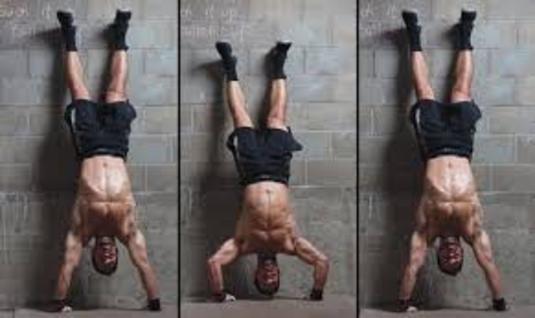
The handstand push-up is a little tricky to get the hang of, but it’s worth persevering.
This fantastic exercise will work your shoulders, arms, and core while increasing body awareness and building muscular endurance that translates into all types of movements.
Beginners should practice by holding themselves up against a wall with full leg extension, then slowly perform negatives. Once you’ve mastered this, lower yourself until your head almost touches the ground, then push back up to the starting position.
Avoid overextending your lower back as this will place undue pressure on it. Instead, squeeze and drive your hips forward. Being upside down requires a high level of body awareness and shoulder mobility as well as strength. It’s best if you can get a spotter by your side to keep you vertical until you’ve found your balance.
One Legged Burpee
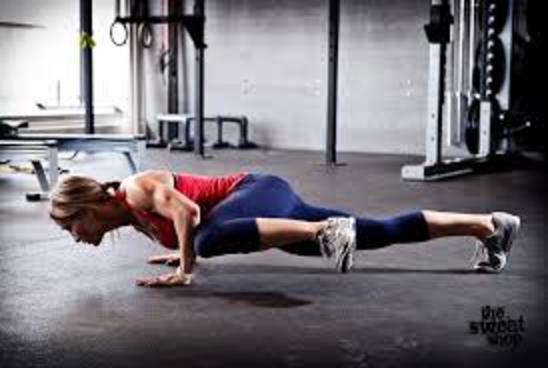
We’ve saved the best (read: most painful) exercise to last. The one-legged burpee adds an additional midline and core workload as well as increasing the resistance on a single leg.
The result?
An increase in intensity and difficulty of this already brutal exercise. You can thank me later.
The movement is the same as a normal burpee, but as the name suggests, you use only one leg. This means the rest of your body works harder to balance your frame. Ideally, you’ll keep your unused leg stretched out and tight to add to the difficulty of the movement. If you want the commando version, add a hop after you stand up.
Perform ten reps on one side, and then switch legs.
Conclusion
Just because you have no equipment, it doesn’t mean you can’t incorporate advanced training exercises into your routine and grab an absolutely killer session.
You should always master the basics first, but when you feel it’s time to progress, don’t just automatically reach for the dumbbell.
Regardless of whether you’ve always been a power lifter, train in martial arts, or are a marathon runner, adding bodyweight exercises to your routine will help you smash through plateaus and build that lean, functional muscle necessary to elevate your game.

